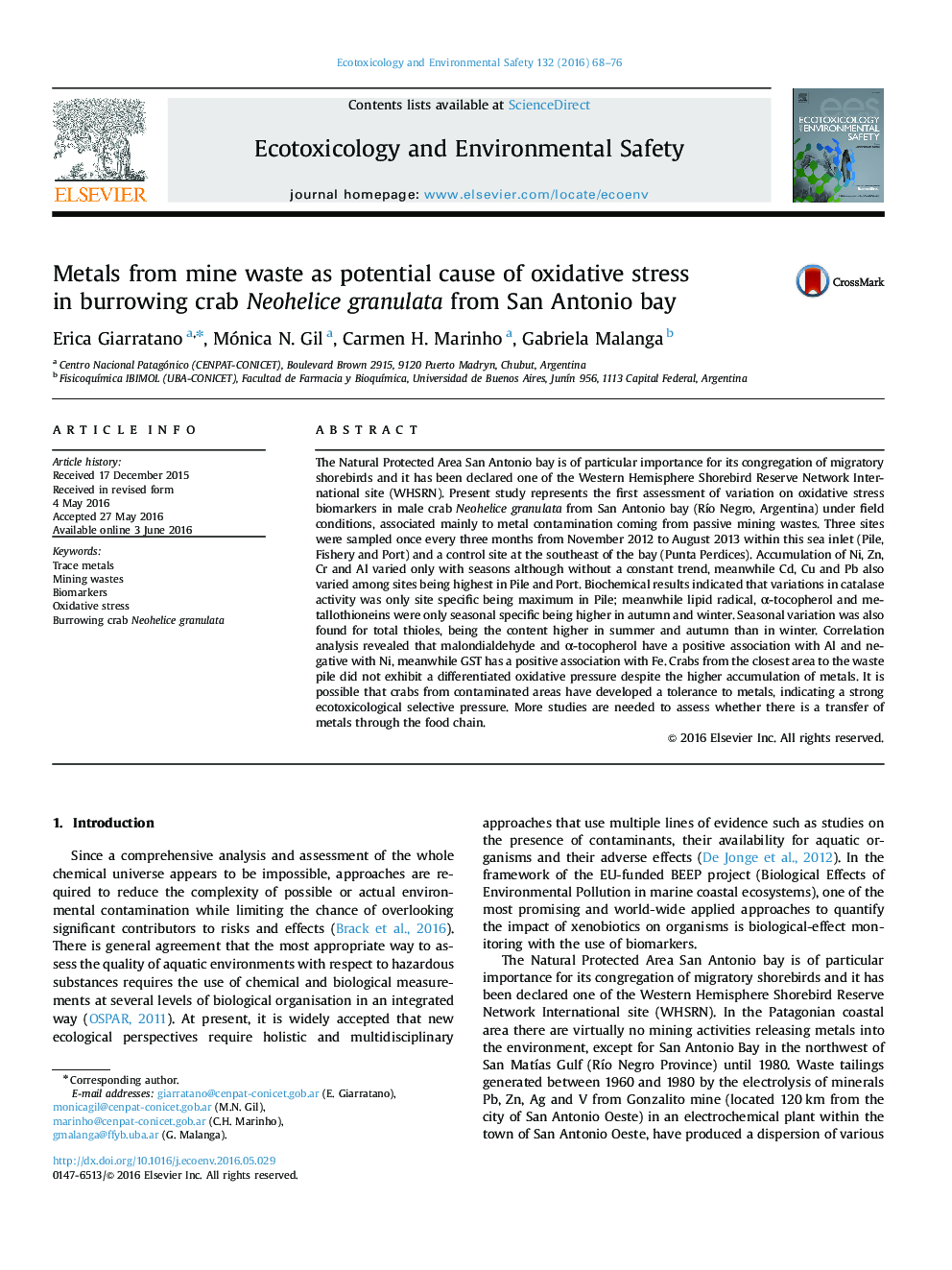| Article ID | Journal | Published Year | Pages | File Type |
|---|---|---|---|---|
| 4419073 | Ecotoxicology and Environmental Safety | 2016 | 9 Pages |
•First study testing changes on oxidative stress biomarkers in crabs from San Antonio bay.•Cd, Cu and Pb were highest in Pile and Port, the closest sites to the waste pile.•MDA and α-T were positive associated with Al and negative with Ni, GST was positive associated with Fe.•Crabs were unable to cope with the lipid radical production, evidenced by increased MDA content.•Crabs closest to the waste pile zone did not show differentiated oxidative pressure.
The Natural Protected Area San Antonio bay is of particular importance for its congregation of migratory shorebirds and it has been declared one of the Western Hemisphere Shorebird Reserve Network International site (WHSRN). Present study represents the first assessment of variation on oxidative stress biomarkers in male crab Neohelice granulata from San Antonio bay (Río Negro, Argentina) under field conditions, associated mainly to metal contamination coming from passive mining wastes. Three sites were sampled once every three months from November 2012 to August 2013 within this sea inlet (Pile, Fishery and Port) and a control site at the southeast of the bay (Punta Perdices). Accumulation of Ni, Zn, Cr and Al varied only with seasons although without a constant trend, meanwhile Cd, Cu and Pb also varied among sites being highest in Pile and Port. Biochemical results indicated that variations in catalase activity was only site specific being maximum in Pile; meanwhile lipid radical, α-tocopherol and metallothioneins were only seasonal specific being higher in autumn and winter. Seasonal variation was also found for total thioles, being the content higher in summer and autumn than in winter. Correlation analysis revealed that malondialdehyde and α-tocopherol have a positive association with Al and negative with Ni, meanwhile GST has a positive association with Fe. Crabs from the closest area to the waste pile did not exhibit a differentiated oxidative pressure despite the higher accumulation of metals. It is possible that crabs from contaminated areas have developed a tolerance to metals, indicating a strong ecotoxicological selective pressure. More studies are needed to assess whether there is a transfer of metals through the food chain.
Graphical abstractFigure optionsDownload full-size imageDownload as PowerPoint slide
